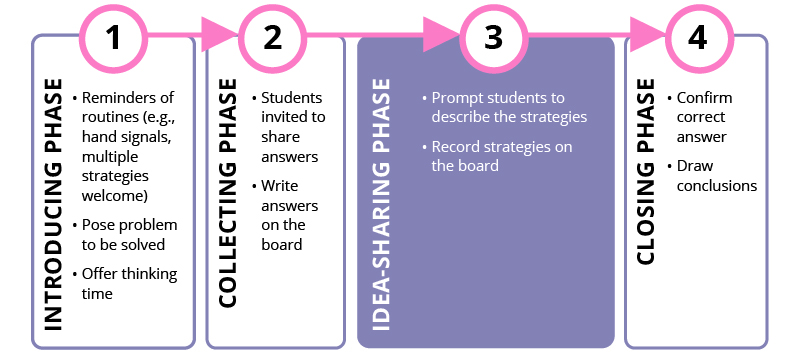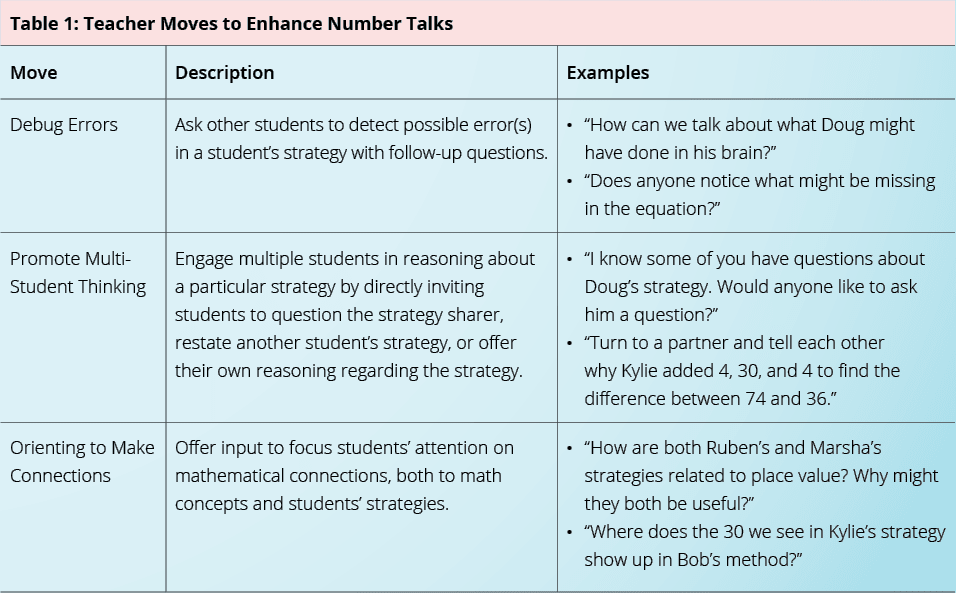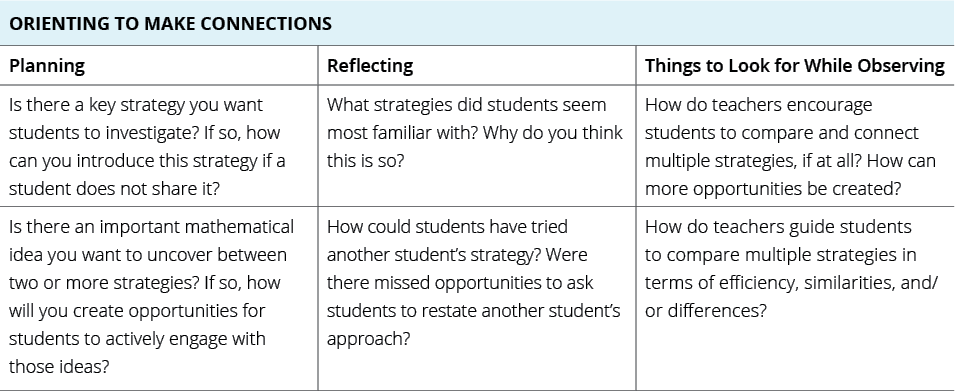
Number Talks Create Ownership in Math Learning
Help students and teachers talk about math concepts with helpful instructional routines.
Topics: STEM, Curriculum and Instruction
Educators want all students to engage in a rich mathematical discourse that helps them develop ownership of math knowledge and a positive outlook on math learning. One way to cultivate such an environment is through Number Talks, according to authors Cathy Humphreys and Ruth Parker in Making Number Talks Matter. Number Talks are brief instructional routines in which students use mental mathematics to solve problems.
Students benefit from Number Talks in multiple ways. Jo Boaler describes them in Mathematical Mindsets as the best pedagogical method to develop number sense in a way that helps students see “the flexible and conceptual nature” of math. Other authors say that Number Talks allow students to test problem-solving methods and clarify their own math thinking. In short, Number Talks provide students with a routine that fosters their mathematical ownership.
Teachers can benefit from Number Talks, too. Number Talks can provide a routine to learn how to enact the ambitious instruction called for in documents such as the Common Core Standards for Mathematics and the National Council for Teachers of Mathematics’ 2014 “Principles to Actions: Ensuring Mathematical Success for All” guidance. Number Talks can function as a “container” for teaching strategies that facilitate a mathematical discourse that blends conceptual understanding and procedural knowledge for students.
How Number Talks Are Structured
Number Talks have a clear structure and simple routines that are easy to incorporate into classroom practice, but Number Talks aren’t enough to shift a school to ambitious instruction. In our work with pre-service and beginning teachers, we found that teachers implemented Number Talks in a predictable way that aligns with how they are described in math texts.
The routine includes four phases: Introducing, Collecting, Idea-Sharing, and Closing (Figure 1). Within this structure, we noticed the most variation in the Idea-Sharing phase, where students take ownership of their ideas while making and seeing connections among various strategies as observed in a classroom.
Figure 1:

Source: “The Relationship Between Number Talks and Ambitious Instruction: Learning From Beginning Teachers.”
Mathematical Thinking and Learning, 2023
One pitfall is what we call serial sharing. These are situations in which the teacher elicits individual strategies one student at a time, the student shares a strategy, and the teacher uses prompts to encourage another student to share a strategy: “What did you try? Anyone try something else? Did someone who got a different answer have something to share?” With serial sharing, students don’t get opportunities to ask questions about or otherwise respond to a previous strategy or make connections among the ideas shared.
Enhancing Number Talks
Principals play an important role in scaffolding teachers’ opportunities to learn from their own teaching. Here are a few ways principals and instructional leaders can support teachers in using and learning from Number Talks in service to the greater goal of empowering students and making them excited to engage in a rich mathematical discourse.

What to Look For in Number Talks
We offer the following guides to help principals and teacher leaders work with teachers to make Number Talks more powerful. Each of the tables below is meant to foster conversations in which principals and/or teacher leaders support teachers to use one of the three teacher moves identified in Table 1 to enhance enactment of Number Talks. Each table provides questions that can be useful to planning, reflecting, and/or observing a Number Talk.



In our research, we found that beginning teachers who primarily facilitated serial sharing during the Idea-Sharing phase tended to engage in less ambitious instruction throughout their lesson. In contrast, teachers who facilitated the Idea-Sharing phase in a less predictable fashion used more ambitious teaching strategies in their ordinary lessons. These teachers facilitated Idea-Sharing by asking students to debug errors in presented strategies, asking multiple students to reason about a single shared strategy, and orienting students to make connections to concepts and among students’ strategies.
When teachers avoid serial sharing using strategies like these, they enhance Number Talks by getting more students actively engaged in thinking about a shared strategy.
Serial sharing isn’t categorically bad, however; in fact, when learning to facilitate mathematical discussion using Number Talks, it might be a necessary first step for students and teachers alike. As a teacher leader, you can help teachers identify when they are ready to move beyond serial sharing to make Number Talks more powerful.
Brent Jackson is a research associate in mathematics education at WestEd.
Byungeun Pak is an assistant professor at Utah Tech University.
Jillian Cavanna is an assistant professor at University of Hartford.

